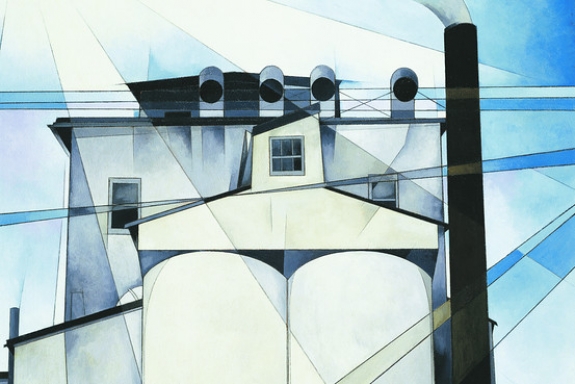Recently the director of a major American museum was gently venting about collecting contemporary art. Curators in that field, he said, are too attuned to the market, too eager to collect works by artists early in their careers, lest they be shut out later if prices rise beyond museums' means. As a result, museums are acquiring many works that will not stand the test of time.
His comments came to mind at "Breaking Ground: The Whitney's Founding Collection," on view now at the Whitney Museum of American Art.
Gertrude Vanderbilt Whitney, the museum's founder, also vacuumed up a lot of contemporary art. But instead of rushing to judgment in the face of too much demand, Whitney was buying when most collectors in the U.S. favored European art. An artist herself, she thought that living American artists were underappreciated, and bought works to support them. By 1929, she owned more than 500 objects, and when that year her offer to donate them to the Metropolitan Museum of Art was declined, she decided to start her own museum and intensified her purchases. With Juliana Force, the museum's first director, she bought an additional 200 works before the Whitney opened in 1931, and another 200 in its first years. When deeded to the Whitney in 1935, this founding collection consisted of about 1,000 works of art.
For the current exhibition, about 100 paintings and sculptures have been selected by co-curators Barbara Haskell and Sasha Nicholas—but not because they are the best. As the Whitney plans its move from Manhattan's Upper East Side to new, larger quarters downtown, curators are reviewing its 18,000-object collection with fresh eyes, organizing six chronological exhibitions and experimenting with new display approaches that might be used in the new galleries. "Breaking Ground," the first, consists mainly of works by lesser-known artists that have a contemporary resonance but haven't been shown in decades. Mixed with a few renowned works, like Edward Hopper's "Early Sunday Morning" and Charles Demuth's "My Egypt," the sampling is meant to be representative of works of the era.
And what a period it was. During these years—roughly 1902 to 1935—artists in Europe were creating several strains of modernism. Leading-edge artists here joined in after the 1913 Armory Show, where they saw works by the likes of Paul Cézanne, Marcel Duchamp and Henri Matisse. Others, however, knew little of or ignored the innovators, and in buying art Whitney not only favored these representational artists but also bought with an inclusive, all-embracing approach.
The exhibition fills six galleries, arranged loosely by theme rather than chronology. The first mimics the entrance to the museum's precursor, Whitney's Eighth Street Studio Club: Its rounded walls enclose a few sculptures, and contain niches filled with Richmond Barthé's graceful "African Dancer" on the left and Whitney's own "Chinoise," a serene self-portrait, Asian-style, on the right. They serve their purpose, which is not to dazzle with artistic brilliance but to take visitors back in time.



